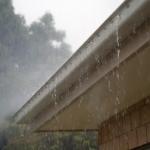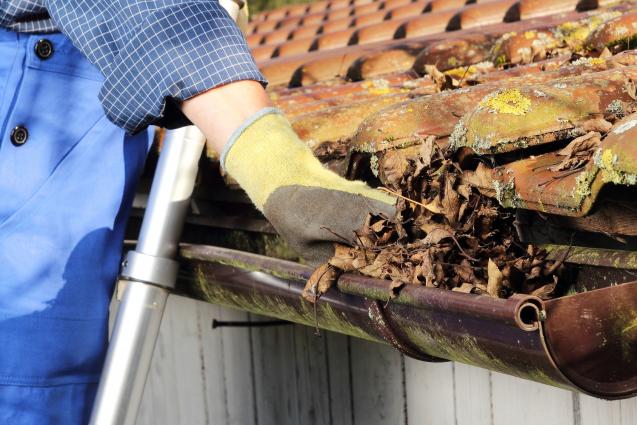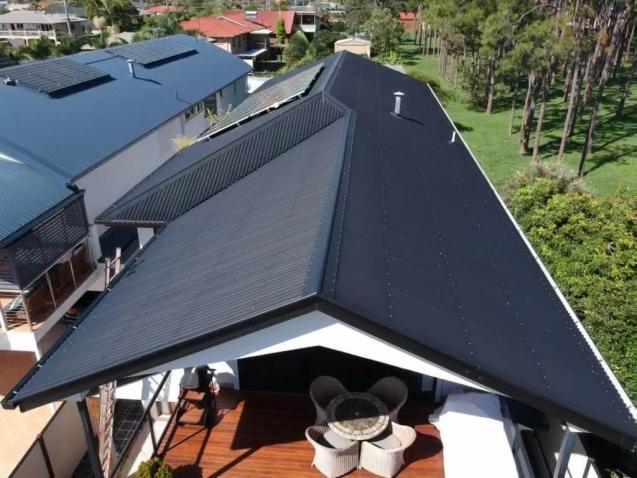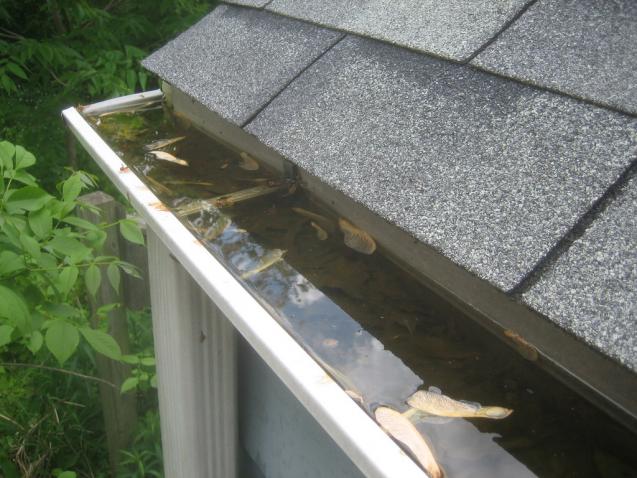
Ways to Protect Your Home from Rainwater Damage
By Porter Vac|December 17, 2018
Potential water damage is rarely on the forefront of anyone’s mind, although it can end up being more hazardous and costly than many other forms of damage to your home. This may be because water damage doesn’t happen all at once. If you do notice it, chances of it causing severe and expensive damages would be quite high. It may be so bad it wouldn’t be viable to repair. In the worst cases, it can cause structural damage, such as cracks in your foundations and wood rot, or mould.
If you are proactive, or just plain lucky, you might catch it at an early enough stage to do something about it before the costs become too high. Unfortunately, even minor leaks can be expensive to fix. Not only can the damage cost you a lot of money, but mould spores can affect the health of you and your family, making it even more vital that you carefully consider water damage and do your best to prevent it.
Protect the exterior
The exterior of your house is the first port of call when applying preventative measures to your home. Your roofs, walls, doors and windows are the first places where rain will collect and start to cause damage.
Roof inspection and maintenance
Your roof’s primary duty is to protect your home and everything inside it from the elements. If it is in poor condition, it will not be able to do this effectively. You should not neglect your roof as it is relatively cheap and easy to maintain. However, the potential damage from lack of care could compromise your home’s structure, and cause damage which would be unaffordable to repair.
Roofs can last for decades, so it is easy to forget about them. However, regular inspection can save you a huge amount of money. To inspect your roof, you should:
· Look at it from the ground, search for signs of aging or damage
· Check for tiles or shingles that are damaged or missing
· Search for cracks along the ridge of your roof or in the mortar joints
If you do notice any damage, you should fix it as soon as possible, especially in wet months. Some damage can be repaired by yourself, although you may need to hire professional roof restoration contractors for more serious issues.
Maintain your exterior’s finish
The material of your walls will likely require some form of paint or finish to properly protect your home from rainwater. Paint is not just there to make your house look good; it acts as a coating to keep your home structurally sound. If you notice seemingly random signs of water damage inside your home, like mould spots or discoloration, there could be water entering through holes in your walls. Inspect your paintwork periodically for signs of damage, such as holes, warping or wood rot. If you are proactive and catch the damage early enough, you may only need to repair the affected areas of siding, rather than entire sections.
Ensure windows and doors are properly sealed
Your doors and windows are likely the most vulnerable areas on your home and therefore should be sealed correctly. Water can seep through any gaps in between the window and doorframes if not properly protected. You should inspect the outside of your windows and doors as well for cracks. If you do notice any cracks, there are expansion foam sealants that will fill them in. You should also keep the paintwork around them well maintained to block any water from penetrating the wood.
Drainage is vital
Waterproofing your exterior is not enough on its own to effectively protect your home from water damage, especially standing water collecting around your home. You need to ensure that you properly direct any excess water away from your home, or risk permanent and very expensive damage to your foundations.
Guttering and drainpipes
Your gutters ensure that water which collects on your roof is drained away so that it doesn’t just drip down your walls and collect at the base. Over time, debris such as pine needles, leaves and twigs will collect in your gutters, blocking them and rendering them ineffective. You should clear them out twice a year. Ideally, once in spring and once in autumn. If your home is one or two storeys high, then it is a job you can easily do yourself. Be sure to practice proper ladder safety. Any buildings taller than this should be done by gutter cleaning professionals otherwise you risk seriously injuring yourself.
Your gutters will direct water into drainpipes, which will lead it into an underwater drain, an over-ground drainage pipe, or a downspout. When cleaning your gutters, you should check your drainpipes are functioning correctly. This can be done by spraying water down the drainpipes with a hose and watching for it to come out the bottom. If you have downspouts, you should ensure that they are directing water far enough away from your walls that the water doesn’t collect around the base of your home.
Runoff
If your home is on the side of a hill or in a valley, you may well have water collecting around your house. Over time, if not remedied, this can cause long-term damage to the base structure of your house. You should look into some form of drainage system to redirect water around your house, such as a French drain. A French drain is a relatively cheap and simple solution which entails a trench filled with gravel and a pipe to collect water from above your house, directing it to somewhere below.
Contact your local gutter cleaning company to ensure your home is well protected from rainwater damage if you are not comfortable doing the job yourself.
If you are proactive, or just plain lucky, you might catch it at an early enough stage to do something about it before the costs become too high. Unfortunately, even minor leaks can be expensive to fix. Not only can the damage cost you a lot of money, but mould spores can affect the health of you and your family, making it even more vital that you carefully consider water damage and do your best to prevent it.
Protect the exterior
The exterior of your house is the first port of call when applying preventative measures to your home. Your roofs, walls, doors and windows are the first places where rain will collect and start to cause damage.
Roof inspection and maintenance
Your roof’s primary duty is to protect your home and everything inside it from the elements. If it is in poor condition, it will not be able to do this effectively. You should not neglect your roof as it is relatively cheap and easy to maintain. However, the potential damage from lack of care could compromise your home’s structure, and cause damage which would be unaffordable to repair.
Roofs can last for decades, so it is easy to forget about them. However, regular inspection can save you a huge amount of money. To inspect your roof, you should:
· Look at it from the ground, search for signs of aging or damage
· Check for tiles or shingles that are damaged or missing
· Search for cracks along the ridge of your roof or in the mortar joints
If you do notice any damage, you should fix it as soon as possible, especially in wet months. Some damage can be repaired by yourself, although you may need to hire professional roof restoration contractors for more serious issues.
Maintain your exterior’s finish
The material of your walls will likely require some form of paint or finish to properly protect your home from rainwater. Paint is not just there to make your house look good; it acts as a coating to keep your home structurally sound. If you notice seemingly random signs of water damage inside your home, like mould spots or discoloration, there could be water entering through holes in your walls. Inspect your paintwork periodically for signs of damage, such as holes, warping or wood rot. If you are proactive and catch the damage early enough, you may only need to repair the affected areas of siding, rather than entire sections.
Ensure windows and doors are properly sealed
Your doors and windows are likely the most vulnerable areas on your home and therefore should be sealed correctly. Water can seep through any gaps in between the window and doorframes if not properly protected. You should inspect the outside of your windows and doors as well for cracks. If you do notice any cracks, there are expansion foam sealants that will fill them in. You should also keep the paintwork around them well maintained to block any water from penetrating the wood.
Drainage is vital
Waterproofing your exterior is not enough on its own to effectively protect your home from water damage, especially standing water collecting around your home. You need to ensure that you properly direct any excess water away from your home, or risk permanent and very expensive damage to your foundations.
Guttering and drainpipes
Your gutters ensure that water which collects on your roof is drained away so that it doesn’t just drip down your walls and collect at the base. Over time, debris such as pine needles, leaves and twigs will collect in your gutters, blocking them and rendering them ineffective. You should clear them out twice a year. Ideally, once in spring and once in autumn. If your home is one or two storeys high, then it is a job you can easily do yourself. Be sure to practice proper ladder safety. Any buildings taller than this should be done by gutter cleaning professionals otherwise you risk seriously injuring yourself.
Your gutters will direct water into drainpipes, which will lead it into an underwater drain, an over-ground drainage pipe, or a downspout. When cleaning your gutters, you should check your drainpipes are functioning correctly. This can be done by spraying water down the drainpipes with a hose and watching for it to come out the bottom. If you have downspouts, you should ensure that they are directing water far enough away from your walls that the water doesn’t collect around the base of your home.
Runoff
If your home is on the side of a hill or in a valley, you may well have water collecting around your house. Over time, if not remedied, this can cause long-term damage to the base structure of your house. You should look into some form of drainage system to redirect water around your house, such as a French drain. A French drain is a relatively cheap and simple solution which entails a trench filled with gravel and a pipe to collect water from above your house, directing it to somewhere below.
Contact your local gutter cleaning company to ensure your home is well protected from rainwater damage if you are not comfortable doing the job yourself.



